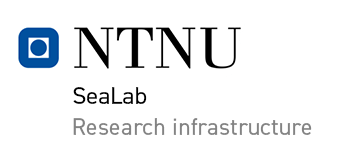Climate-controlled wet labs
Climate-controlled wet labs
At SeaLab there are two laboratories with experimental set-ups for research on fish. In addition there are nine smaller climate-controlled rooms for experiments with fish and cultivation of algae, zooplankton and phytoplankton. The different rooms are described in more detail on this page and on Bookitlab, which can also be used to book labs (for internal and registered external users).
Fish hall 115
Fish hall 115, also known as CODTECH, contains an automated system for rearing fish. It consists of 16 self-cleaning fish tanks each holding up to 200L. The facility is designed for experiments with marine fish fry and plankton. There is access to seawater, freshwater or a mix of the two, and it is possible to control light-intensity, air and water temperature, water flow and feeding. Feeding is automated with the possibility to use live and formulated feed, either separately or co-feeding. Cultures of microalgae, rotifers, Artemia and copepods (Acartia tonsa) for fish food can be produced in nearby facilities.

Fish hall 114
The second of the two fish halls at SeaLab consists of three independent units, each made up of six tanks holding up to 380L. Each unit can be regulated separately, meaning up to three simultaneous experiments with different water quality parameters can be run. The tanks can be supplied with seawater, freshwater or a mix. Controllable parameters include light intensity, water flow, air and water temperature, and feeding. The tanks can be used as a flow-through or recirculation (RAS) system. The room also contains two larger tanks of 2000L each which can be used to hold fish in advance of experiments.

Climate-controlled rooms
SeaLab has nine temperature-controlled rooms that all have access to seawater and / or freshwater of desired temperature. Some of the rooms are connected to gas supply (O2, CO2, N2). The rooms can, among other things, be used for cultivation and experiments with zooplankton and phytoplankton. A unique culture of the copepod Calanus finmarchicus is cultivated in one of the climate-controlled rooms and is available to users. This culture is offered to scientists as part of the European research network for marine biology EMBRC.

Complementary facilities
In connection with fish hall 115 there is a sampling lab equipped with a fume cupboard, microscope, and scales, among other things.
Algae growing laboratory
SeaLab cultivates microalgae for experiments with mussels, rotifers, copepods and marine fish fry. The facility is also used to teach important cultivation techniques to students taking courses on aquaculture.
Facilities for cultivating microalgae and zooplankton at SeaLab are operated in cooperation with SINTEF Ocean. More information on these facilities may be found on the website of SINTEF Ocean.
